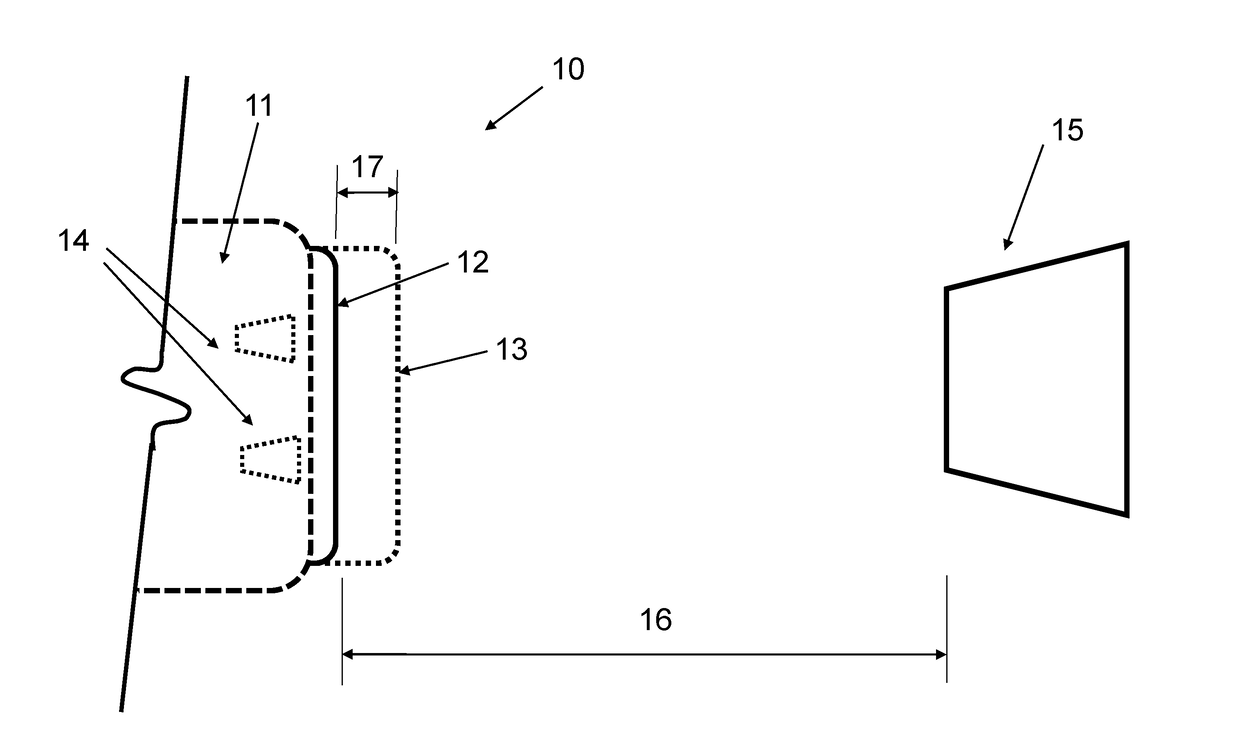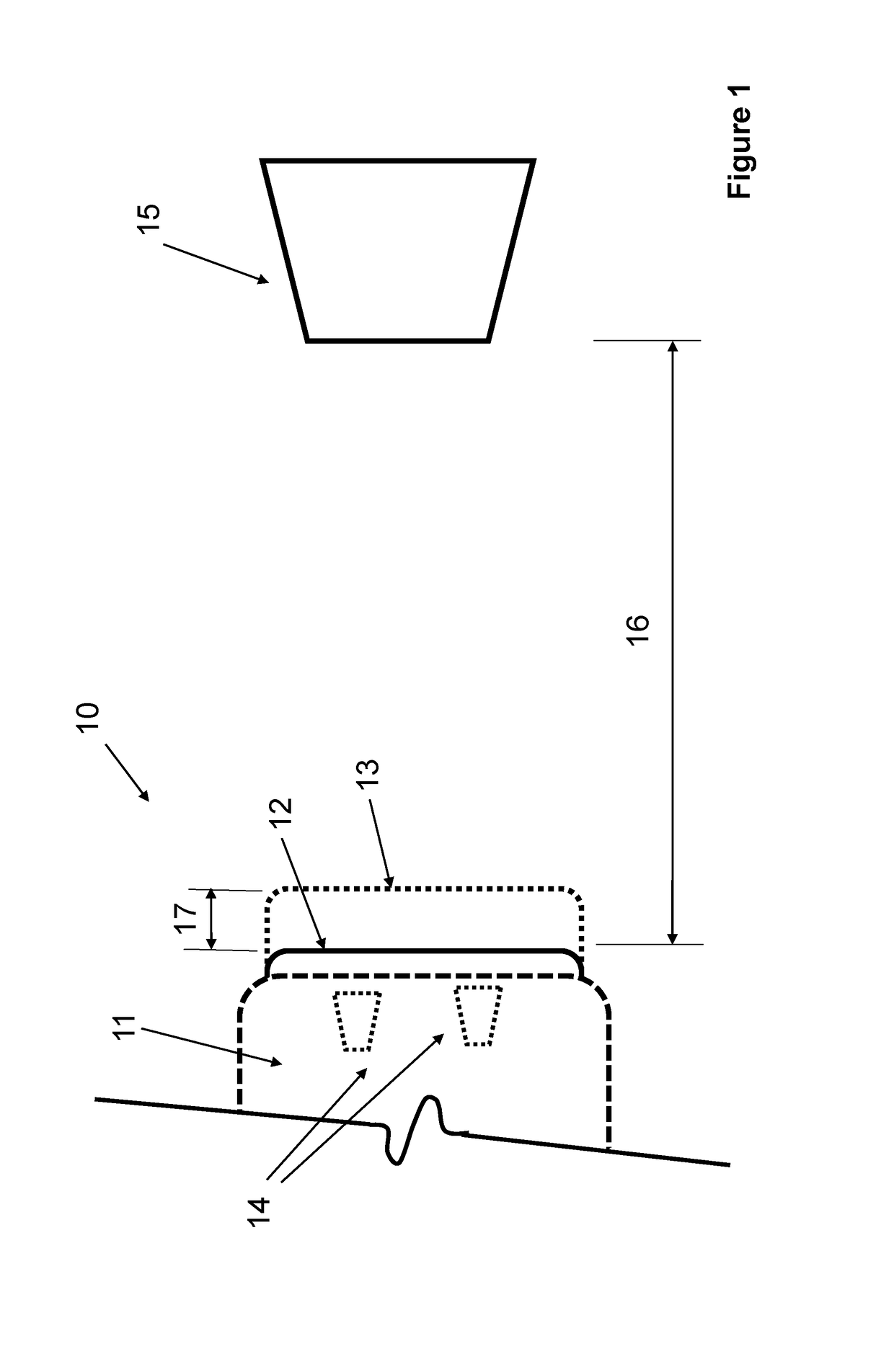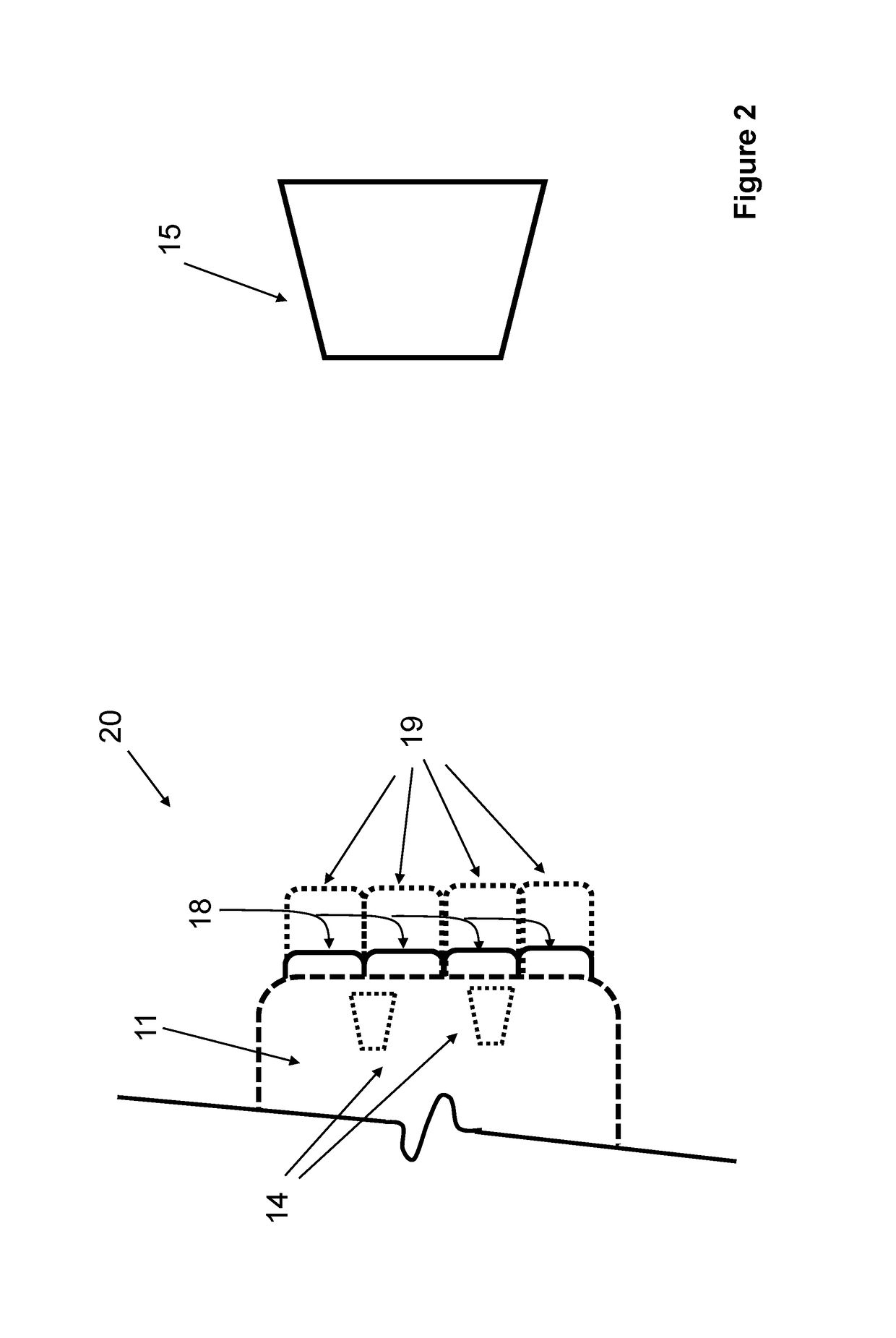Deployable and Smart Car Bumper
- Summary
- Abstract
- Description
- Claims
- Application Information
AI Technical Summary
Benefits of technology
Problems solved by technology
Method used
Image
Examples
first embodiment
[0014]A schematic of the first embodiment is shown in FIG. 1. In FIG. 1, the frontal (or rear) section 11 of a vehicle is shown which is equipped with the deployable bumper 12, shown in its pre-deployment position with solid lines. The vehicle is considered to be equipped with a sensory system (not shown but consisting of appropriate electronics depending on the type of sensor being used and preferably equipped with one or more microprocessor to perform velocity and acceleration and other related calculations) with at least one sensor 14, which can detect the distance between the (un-deployed) bumper 12 and any stationary or moving object 15 in the path of motion of the bumper. Such sensors are well known in the art, such as sonar sensors which bounce a sound wave off of an object in the sensors path and measures any signal returning to the sensor and the time it takes to receive the return signal. RF based sensors or laser sensors can also be used.
[0015]Then when the sensors 14 of ...
embodiment 20
[0022]In the embodiment 20 shown in the schematic of FIG. 2, the deployable bumper 18 is shown to be constructed of several segments (four in FIG. 2) which can be independently deployed. It is, however, appreciated by those skilled in the art that the bumper may be similarly constructed with several rows of segments or in any other proper shapes and arrangements. The frontal view of one such deployable bumper that is constructed with two rows (indicated by numerals 21 and 22) of four segments (indicated by numerals 23 and 24 for the rows 21 and 22, respectively) is shown in FIG. 3. By providing several segmented deployable bumpers, each individual segment in each rows may be independently deployed to achieve maximum effectiveness. At low speeds and if only a small object is being encountered, the bumper deploying control unit will then also have the option of deploying any one or more of the required bumper segments.
[0023]In the embodiments of FIGS. 2 and 3, the deployable bumpers a...
PUM
 Login to view more
Login to view more Abstract
Description
Claims
Application Information
 Login to view more
Login to view more - R&D Engineer
- R&D Manager
- IP Professional
- Industry Leading Data Capabilities
- Powerful AI technology
- Patent DNA Extraction
Browse by: Latest US Patents, China's latest patents, Technical Efficacy Thesaurus, Application Domain, Technology Topic.
© 2024 PatSnap. All rights reserved.Legal|Privacy policy|Modern Slavery Act Transparency Statement|Sitemap



